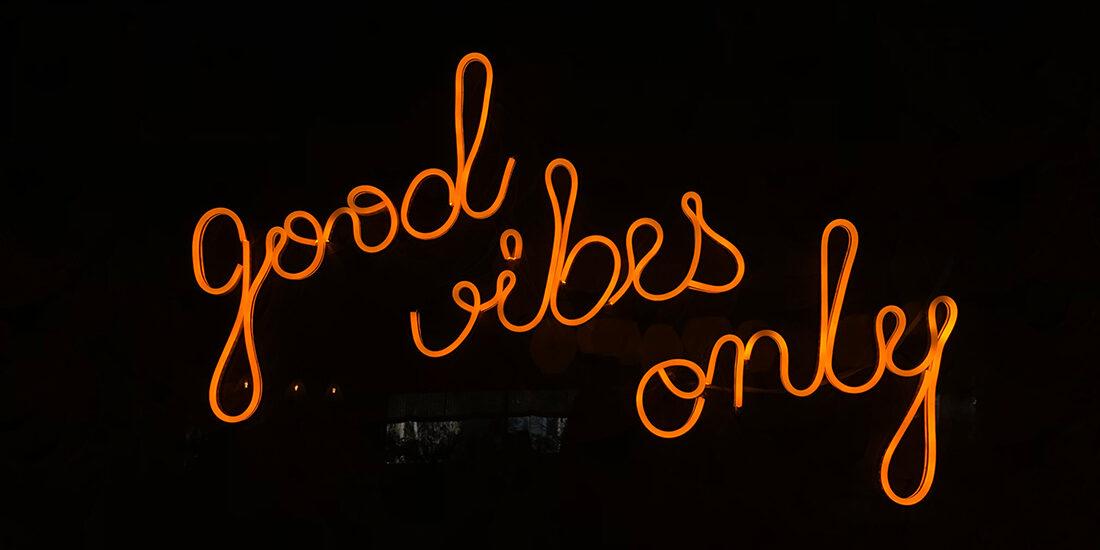I remember when I finally understood the “pink cloud” everyone talks about in addiction recovery meetings. The pink cloud refers to a phase of recovery – typically early in the process – when you feel blissful and exhilarated. It’s a natural high. The pink cloud can be a positive thing; it helps people awaken to the idea that life is exciting and fulfilling without drugs and alcohol. However, the pink cloud is also a potential relapse precipitator. All good things come to an end, and the pink cloud, too, must dissipate. When this occurs, one of two things happen: The newcomer settles into the natural ebb and flow of life… or feels disillusioned and returns to a chemically manufactured fog.
It took me longer than most, but when I finally started doing some genuine recovery work, I ascended to the rose-colored, billowing heights I’d heard so much about. During this time, I was moved to post regular inspirational quotes on social media, including: “Good vibes only!”
I still enjoy an inspirational quote from time to time (okay – so maybe most of the time), but I’d wager a bet that my social network found me particularly obnoxious during this period of my recovery – especially those going through a tough time. Today, whenever I see the quote, “good vibes only,” I shake my head. This reaction is not because I am a Negative Nancy – or because I preside over the Land of Holier-Than-Thou. That good vibe-y person was me after all. It’s because of something aptly called “toxic positivity”.
The idea that we can skate through life experiencing “good vibes only” is the very idea that gets us in trouble in the first place. People turn to drugs and alcohol – dependent or not – because these substances alter reality. We want things to feel good all the time – even when they don’t. And if we can’t feel good, the next best thing is numb.
The reality of life is that there are good vibes and not-so-good vibes. There are boring vibes and adventurous vibes. There are love vibes and hate vibes, sexy vibes and get-away-from-me vibes. There are mad vibes and sad vibes, healing vibes and joyful vibes. There are even downright evil vibes.
When you aim for one vibe – and one vibe only – you are not living in reality. And what people in recovery need to learn most is how to live in reality, whether at a New Hampshire drug rehab or New Hampshire sober living.
One of the key skills we try to teach at our drug rebab center in New Hampshire is distress tolerance. Distress tolerance has a very specific definition in relation to dialectical behavioral therapy, but it’s also just how it sounds: sitting with uncomfortable feelings. People with substance use disorder have brains wired to escape from discomfort. The work is to establish a pause between trigger and reaction. Typically, an uncomfortable scenario would play out like this: “I don’t feel good. I need to use”. The antidote is to interrupt this snap decision by identifying the emotion/thought and choosing a response: “I don’t feel good. I am angry. What do I do when I’m angry? I should call someone in recovery”.
Toxic positivity is anything that encourages someone not to acknowledge an uncomfortable emotion -and project an image of happiness instead. According to Psychology Today, when “you deny or avoid unpleasant emotions, you make them bigger. Avoiding negative emotions reinforces this idea: Because you avoid feeling them, you tell yourself that you don’t need to pay attention to them. While you are trapped in this cycle, these emotions become bigger and more significant as they remain unprocessed”. The other downside is that you became less relatable. Humans are diverse and sometimes messy beings. “When people don’t pay attention to negative feelings, and then come across to others like they don’t have them, it makes them less approachable,” says Psychology Today. “These people probably give off the impression that they don’t have any problems, which most people can intuit is not the case. You might find such a person annoying or difficult to connect with”.
Johann Hari said, “the opposite of addiction is connection”. Vulnerability – sharing even the messy parts of yourself – is essential to forming genuine connection. The ability to live in reality, therefore, is essential.
Despite its sunshine-y curb appeal, “good vibes only” is clearly a counterproductive motto by which to live. However, it’s also counterproductive to hang out in the realm of “bad vibes only”. Distress tolerance does not mean living in a swamp of misery 24/7 – or maintaining relationships with people who are determined to keep you mired in the swamp. “Emotions are not “good” or “bad,” all positive or all negative,” Psychology Today reminds us. “Instead, think of them as guidance: Emotions help us make sense of things”. Distress tolerance is about learning to shift our mindset from, “this feels terrible and I need to make it go away,” to “what is this trying to teach me?”
Today, I still love sharing inspirational quotes, but the content looks a little different. When I was writing this piece, the following quote popped up in my newsfeed. It felt like serendipity:
Your anger? It’s telling you where you feel powerless. Your anxiety? It’s telling you that something in your life is off balance. Your fear? It’s telling you what you care about. Your apathy? It’s telling you where you’re overextended and burnt out. Your feelings aren’t random, they are messengers. And if you want to get anywhere, you need to be able to let them speak to you, and tell you what you really need.
– Brianna Wiest
If you are interested in learning more about our New Hampshire drug rehab, contact us today!
Autumn Khavari is the Process Recovery Center’s in-house writer. She received an education in Substance Use Counseling from Beal College in Bangor, Maine.



